Motorola Solutions 89FT4866 HAND HELD PORTABLE 2-WAY R4ADIO User Manual USERS MANUAL
Motorola Solutions, Inc. HAND HELD PORTABLE 2-WAY R4ADIO USERS MANUAL
USERS MANUAL
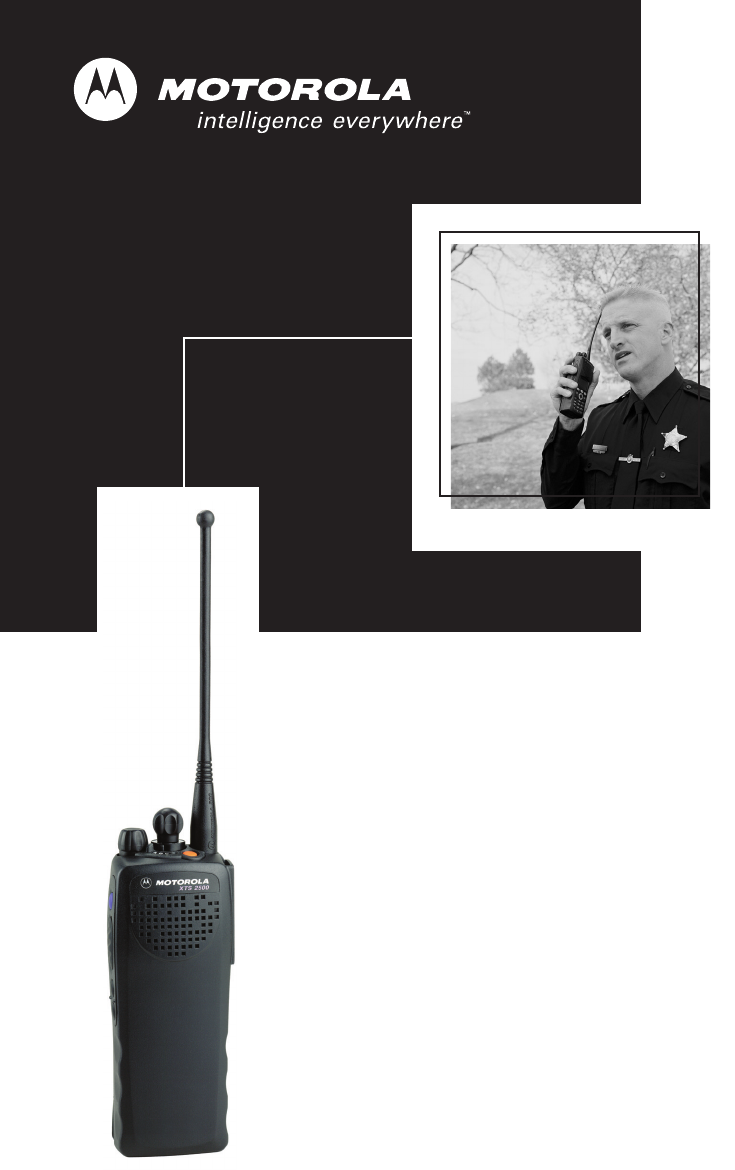
ASTRO
®
XTSTM 2500
Digital Portable Radio
Model I
User Guide
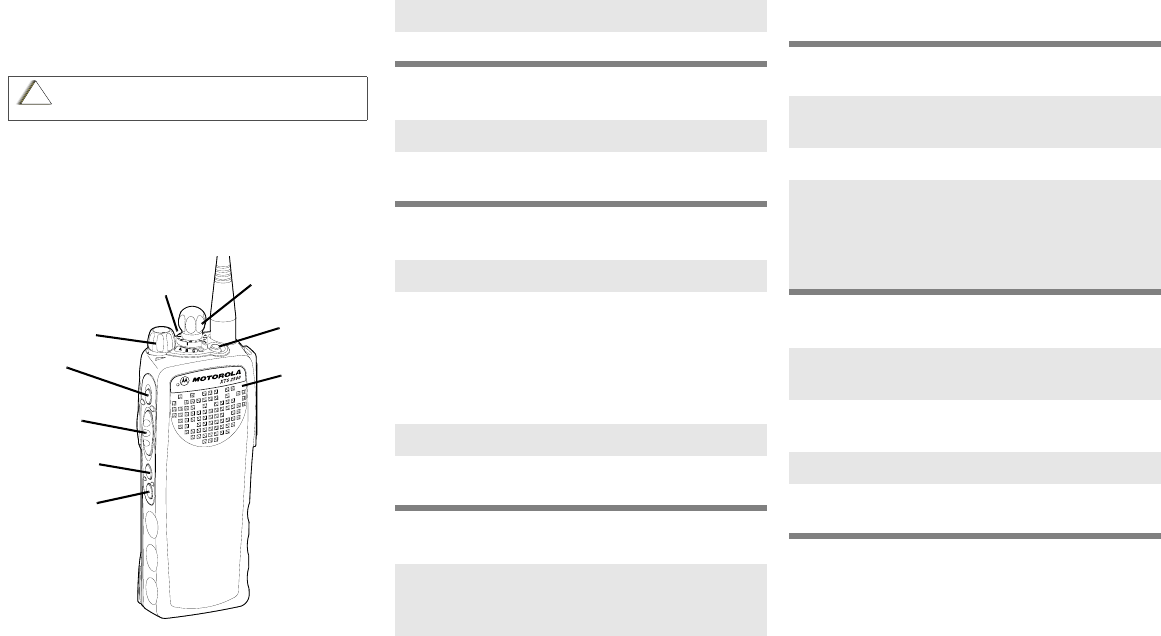
ASTRO® XTS™ 2500
Digital Portable Radio, Model I
Quick Reference Card
Product Safety and RF Exposure Compliance
ATTENTION!
This radio is restricted to occupational use only to satisfy
FCC RF energy exposure requirements. Before using this
product, read the RF energy awareness information and
operating instructions in the Product Safety and RF
Exposure booklet enclosed with your radio (Motorola
Publication part number 6881095C98) to ensure
compliance with RF energy exposure limits.
Write your radio’s programmed features on the
dotted lines.
Radio On/Off
Zones/Channels
Receive/Transmit
Send Emergency Alarm
Send Silent Emergency Alarm
Send Emergency Call
Before using this product, read the operating instructions
for safe usage contained in the Product Safety and RF
Exposure booklet enclosed with your radio.
!
C
a u t i o
n
16-Position
Select Knob
Speaker/Mic
Top Button
_ _ _ _ _ _ _
3-Position
Rotary Switch
_ _ _ _ _ _
Top Side
Button
_ _ _ _ _ _ _
On/Off/
Volume Knob
Side Button 1
_ _ _ _ _ _ _
Side Button 2
_ _ _ _ _ _ _
PTT Button
1 On - On/Off/Volume knob clockwise.
2 Off - On/Off/Volume knob counterclockwise.
1 Zone - Move Zone switch to desired zone.
2 Channel - Turn Channel Selector switch to
desired channel.
1 Radio on and select zone/channel.
2 Listen for a transmission.
OR
Press and hold Volume Set button. Release
Volume Set button.
OR
Press Monitor button and listen for activity.
3 Adjust volume, if necessary.
4 Press and hold PTT to transmit; release to
listen.
1 Radio on and press Emergency button. You
see red LED; you hear short, medium-pitched
tone.
2 When dispatcher’s acknowledgment is
received, you hear four tones; alarm ends;
radio exits emergency.
1 Radio on and press Emergency button. You
see no LED; you hear no tone.
2Press PTT.
3 Alarm continues until you exit by:
• Press and hold Emergency button for one
second
OR
• Press and release PTT.
1 Radio on and press Emergency button. A
short, medium-pitched tone sounds.
2 Press and hold PTT. Announce your
emergency into the microphone.
3 Release PTT to end call.
4 Press and hold Emergency button for one
second to exit.

i
ASTRO® XTS™ 2500
Digital Portable Radio
Model I
User Guide
6881094C04-D
MOTOROLA, the Stylized M Logo, ASTRO, and CommPort are registered in
the U.S. Patent & Trademark Office. All other product or service names are
the property of their respective owners.
P25 radios contain technology patented by Digital Voice Systems, Inc.
© Motorola, Inc. 2004. All Rights Reserved. Printed in the U.S.A. 4/15/04.
Motorola, Inc.
8000 W. Sunrise Blvd.
Ft. Lauderdale, FL 33322

ii
This declaration is applicable to your radio only if your radio is labeled
with the FCC logo shown below.
DECLARATION OF CONFORMITY
Per FCC CFR 47 Part 2 Section 2.1077(a)
Responsible Party
Name: Motorola, Inc.
Address: 8000 West Sunrise Boulevard
Plantation, FL 33322 USA
Phone Number: 1-888-567-7347
Hereby declares that the product:
Model Name: XTS 2500
conforms to the following regulations:
FCC Part 15, subpart B, section 15.107(a), 15.107(d) and section 15.109(a)
Class B Digital Device
As a personal computer peripheral, this device complies with Part 15 of the FCC
Rules. Operation is subject to the following two conditions:
1. this device may not cause harmful interference, and
2. this device must accept any interference received, including interference that
may cause undesired operation.
Note: This equipment has been tested and found to comply with the limits for a
Class B digital device, pursuant to part 15 of the FCC Rules. These limits are
designed to provide reasonable protection against harmful interference in a
residential installation. This equipment generates, uses and can radiate radio
frequency energy and, if not installed and used in accordance with the
instructions, may cause harmful interference to radio communications.
However, there is no guarantee that interference will not occur in a particular
installation.
If this equipment does cause harmful interference to radio or television reception,
which can be determined by turning the equipment off and on, the user is
encouraged to try to correct the interference by one or more of the following
measures:
• Reorient or relocate the receiving antenna.
• Increase the separation between the equipment and receiver.
• Connect the equipment into an outlet on a circuit different from that to which
the receiver is connected.
• Consult the dealer or an experienced radio/TV technician for help.
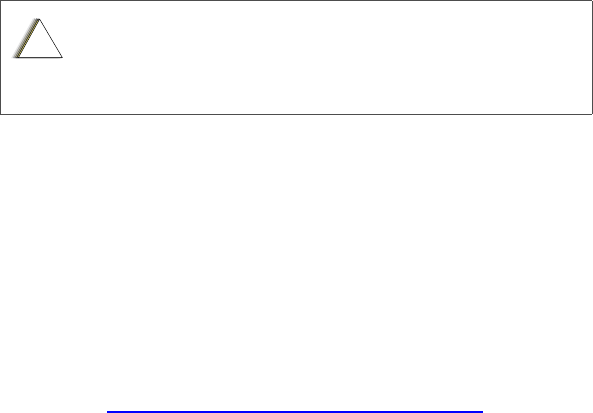
iii
Product Safety and RF Exposure Compliance
ATTENTION!
This radio is restricted to occupational use only to satisfy FCC
RF energy exposure requirements. Before using this product,
read the RF energy awareness information and operating
instructions in the Product Safety and RF Exposure booklet
enclosed with your radio (Motorola Publication part number
6881095C98) to ensure compliance with RF energy exposure
limits.
For a list of Motorola-approved antennas, batteries, and other
accessories, visit the following web site which lists approved
accessories: http://www.motorola.com/cgiss/index.shtml
Computer Software Copyrights
The Motorola products described in this manual may include
copyrighted Motorola computer programs stored in semiconductor
memories or other media. Laws in the United States and other
countries preserve for Motorola certain exclusive rights for
copyrighted computer programs, including, but not limited to, the
exclusive right to copy or reproduce in any form the copyrighted
computer program. Accordingly, any copyrighted Motorola computer
programs contained in the Motorola products described in this
manual may not be copied, reproduced, modified, reverse-
engineered, or distributed in any manner without the express written
permission of Motorola. Furthermore, the purchase of Motorola
products shall not be deemed to grant either directly or by implication,
estoppel, or otherwise, any license under the copyrights, patents or
patent applications of Motorola, except for the normal non-exclusive
license to use that arises by operation of law in the sale of a product.
Documentation Copyrights
No duplication or distribution of this document or any portion thereof
shall take place without the express written permission of Motorola.
Before using this product, read the operating
instructions for safe usage contained in the Product
Safety and RF Exposure booklet enclosed with your
radio.
!
C
a u t i o
n
iv
No part of this manual may be reproduced, distributed, or transmitted
in any form or by any means, electronic or mechanical, for any
purpose without the express written permission of Motorola.
Disclaimer
The information in this document is carefully examined, and is
believed to be entirely reliable. However, no responsibility is assumed
for inaccuracies. Furthermore, Motorola reserves the right to make
changes to any products herein to improve readability, function, or
design. Motorola does not assume any liability arising out of the
applications or use of any product or circuit described herein; nor
does it cover any license under its patent rights, nor the rights of
others.

ASTRO XTS 2500 Model I v
Contents
Declaration of Conformity .................................................................. ii
Product Safety and RF Exposure Compliance .................................iii
Computer Software Copyrights .........................................................iii
Documentation Copyrights ................................................................iii
Disclaimer ........................................................................................ iv
General Radio Operation .............................................. 1
Notations Used in This Manual ......................................................... 1
XTS 2500 Model I Radio ................................................................... 2
Physical Features of the XTS 2500 Model I Radio ........................... 3
Programmable Features ................................................................... 4
LED Indicators .................................................................................. 5
Alert Tones ........................................................................................ 5
Standard Accessories ....................................................................... 8
Battery ........................................................................................ 8
Antenna .................................................................................... 10
Belt Clip .................................................................................... 11
Universal Connector Cover ............................................................. 12
Remove the Connector Cover .................................................. 12
Attach the Connector Cover ..................................................... 12
Remote Speaker Microphone Adapter ............................................ 13
Remove the Adapter ................................................................. 13
Attach the Adapter .................................................................... 13
Radio On and Off ............................................................................ 14
Turn the Radio On .................................................................... 14
Turn the Radio Off .................................................................... 14
Zones and Channels ....................................................................... 15
Select a Zone ........................................................................... 15
Select a Channel ..................................................................... 15
Receive / Transmit .......................................................................... 16
Without Using the Volume Set and Monitor Buttons ................ 16
Use the Preprogrammed Volume Set Button ........................... 17
Use the Preprogrammed Monitor Button .................................. 18
Conventional Mode Operation ........................................................ 19
Common Radio Features............................................ 21
Selectable Power Level ................................................................... 21
Conventional Squelch Options ........................................................ 21
Analog Squelch ........................................................................ 21

vi
PL Defeat .........................................................................................21
Time-out Timer ................................................................................22
Emergency ......................................................................................23
Send an Emergency Alarm .......................................................24
Send a Silent Emergency Alarm ...............................................25
Send an Emergency Call ..........................................................25
Emergency Keep-Alive .............................................................27
Scan ................................................................................................28
Turn Scan On and Off ...............................................................28
Delete a Nuisance Channel ......................................................28
Conventional Scan Only ...........................................................29
Telephone Calls (Trunking Only) .....................................................30
Answer a Phone Call ................................................................30
Private Calls (Trunking Only) ...........................................................31
Answer a Private Call ................................................................31
Call Alert Paging ..............................................................................32
Answer a Call Alert Page ..........................................................32
Repeater or Direct Operation ..........................................................33
Select Repeater or Direct Operation ........................................33
Special Radio Features ............................................... 35
Trunking System Controls ...............................................................35
Failsoft ......................................................................................35
Out-of-Range ............................................................................35
Site Lock ...................................................................................36
Site Change ..............................................................................36
Helpful Tips .................................................................. 37
Radio Care ......................................................................................37
Cleaning ....................................................................................37
Handling ....................................................................................37
Service .............................................................................................38
Battery .............................................................................................39
Battery Life ................................................................................39
Charging the Battery .................................................................39
Battery Recycling and Disposal .......................................................40
Antenna ...........................................................................................41
Radio Operating Frequencies ...................................................41

ASTRO XTS 2500 Model I vii
Accessories ................................................................. 43
Antennas ......................................................................................... 43
Batteries .......................................................................................... 43
Carry Accessories ........................................................................... 44
Belt Clips .................................................................................. 44
Body-Worn ................................................................................ 44
Chargers ......................................................................................... 44
Enhanced and Multi-Unit Line Cords ........................................ 45
Microphones, Remote Speaker ....................................................... 45
Surveillance Accessories ................................................................ 46
Earpieces .................................................................................. 46
Headsets and Headset Accessories ......................................... 47
Radio Interface Modules for Ear Microphones ......................... 48
Switches .......................................................................................... 48
Appendix: Maritime Radio Use in the
VHF Frequency Range ................................................ 49
Special Channel Assignments ......................................................... 49
Emergency Channel ................................................................. 49
Non-Commercial Call Channel ................................................. 50
Operating Frequency Requirements ............................................... 50
Glossary....................................................................... 53
Commercial Warranty ................................................. 57
Index............................................................................. 63

viii
Table 1: Channel Map
Use the chart below to map the channels (Cx) and zones (Zx) for your radio.
Z1 Z2 Z3 Z4 Z5 Z6
C1
C2
C3
C4
C5
C6
C7
C8
C9
C10
C11
C12
C13
C14
C15
C16
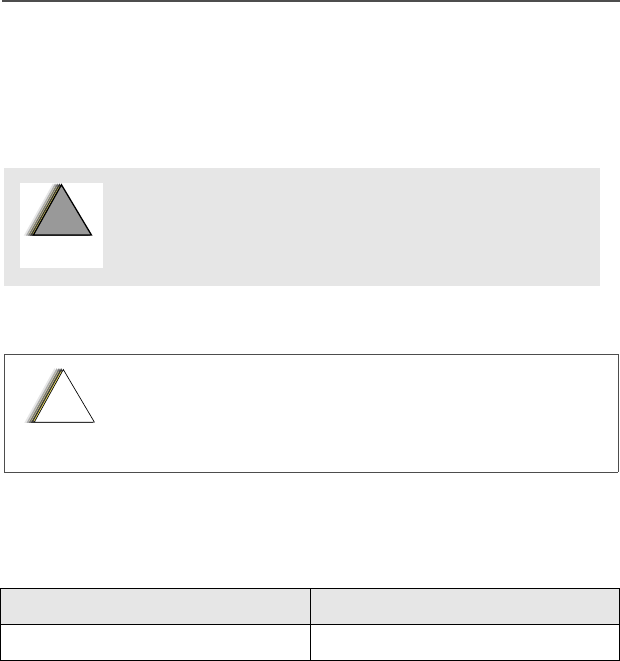
ASTRO XTS 2500 Model I 1
General Radio Operation
Notations Used in This Manual
You will notice the use of WARNINGS, CAUTIONS, and Notes
throughout this manual. These notations are used to emphasize that
safety hazards exist and that care must be taken or observed.
Note: An operational procedure, practice, or condition, etc. which is
essential to emphasize.
The following special notations identify certain items:
An operational procedure, practice, condition,
etc. exists which may result in injury or death if
not carefully observed.
An operational procedure, practice, condition, etc.
exists which may result in damage to the equipment if
not carefully observed.
Example Description
Top button Buttons are shown in bold print.
!
W
A R N I N
G
!
!
C
a u t i o
n
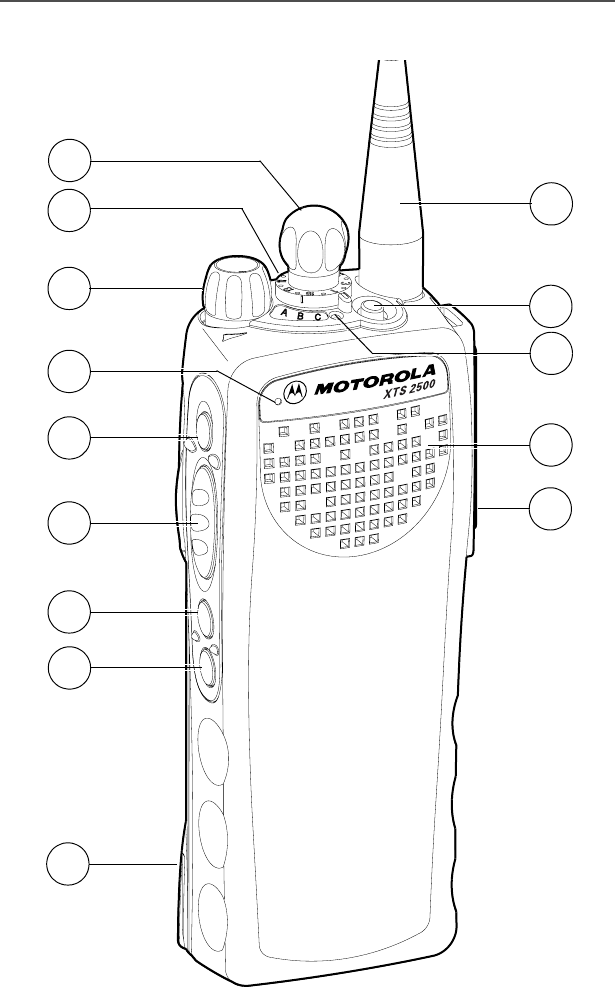
2
General Radio Operation
XTS 2500 Model I Radio
1
2
3
6
7
8
10
11
12
13
4
9
14
5

ASTRO XTS 2500 Model I 3
General Radio Operation
Physical Features of the XTS 2500 Model I Radio
Item Page Item Page
1Antenna 10 8 On/Off/Volume
Control Knob
14
2Top Button
(programmable)
9Microphone
3LED 5 10 Top Side (Select)
Button
(programmable)
4Speaker 11 Push-to-Talk
(PTT) Button
5Universal Connector 12 12 Side Button 1
(programmable)
6 16-Position Knob
(programmable)
13 Side Button 2
(programmable)
7 3-Position Concentric
Switch (programmable)
14 Battery 8
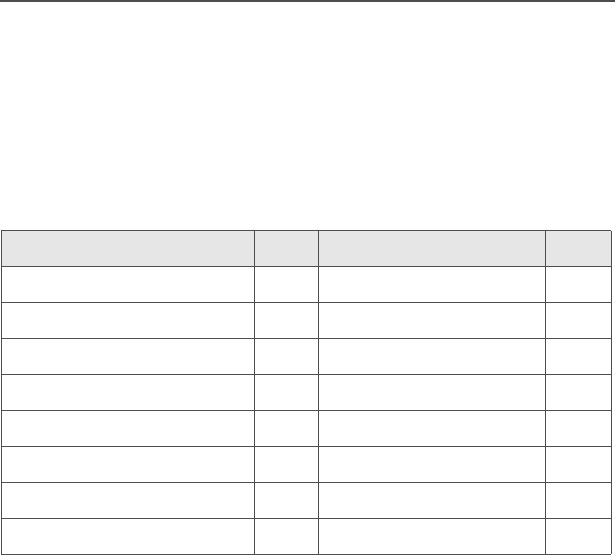
4
General Radio Operation
Programmable Features
The programmable controls on your radio can be programmed by a
qualified technician to operate certain software-activated features.
The features that can be assigned to these controls, and the page
numbers where these features can be found, are listed below.
Any references in this manual to controls that are “prepro-
grammed” means that a qualified radio technician must use the
radio’s programming software to assign a feature to a control.
Table 1: Programmable Features
Feature Page Feature Page
Call Response 30 Repeater/Direct 33
Channel Selection 15 Scan On/Off 28
Dynamic Priority 29 Site Lock/Unlock 36
Emergency 23 Site Search 36
Monitor 18 Transmit Power Level 21
Nuisance Delete 28 Volume Set 17
Phone 30 Zone Selection 15
PL Defeat 21

ASTRO XTS 2500 Model I 5
General Radio Operation
LED Indicators
Alert Tones
Your radio uses alert tones to inform you of radio conditions.
Table 2: LED Indicators
This LED Color: indicates:
RED (Non-flashing) Transmitting
RED (Flashing) • Channel Busy
OR
• Low Battery (lights while transmitting)
GREEN (Flashing) Receiving Individual Call
Table 3: Alert Tones
You hear: Tone Name Heard:
Short,
Low-Pitched
Tone
Invalid Key-Press when the wrong key is
pressed.
Radio Self-Test
Failed
when the radio fails the power-
up self test.
Reject when an unauthorized request
is made.
Time-Out Timer
Warning
four seconds before time out.

6
General Radio Operation
Long,
Low-Pitched
Tone
No ACK Received when the radio does not
receive an acknowledgment.
Time-Out Timer
Timed Out
after time out.
Talk Prohibit/
PTT Inhibit
when the PTT button is
pressed, and transmissions
are prevented.
Out-of-Range when the PTT button is
pressed, but the radio is out of
range of the system.
Invalid Mode when the radio is set to an
unprogrammed channel.
Individual Call
Warning Tone
when the radio is in Individual
Call without any activity for
more than 6 seconds.
A Group of
Low-Pitched
Tones (Busy
Tone)
Busy when the system is busy.
Short,
Medium-
Pitched Tone
Valid Key-Press when the correct key is
pressed.
Radio Self-Test
Pass
when the radio passes its
power-up self-test.
Priority Channel
Received
when activity on a priority
channel is received.
Emergency Alarm
Entry
when entering the emergency
state.
Central Echo when the central controller has
received a request from a
radio.
Table 3: Alert Tones (Continued)
You hear: Tone Name Heard:

ASTRO XTS 2500 Model I 7
General Radio Operation
Long,
Medium-
Pitched Tone
Volume Set when volume changed on a
quiet channel.
Emergency Exit upon exiting the emergency
state.
A Group of
Medium-
Pitched
Tones
Failsoft when the trunking system fails.
Automatic Call Back when the voice channel is
available from the previous
request.
Talk Permit (When pressing the PTT
button) verifies the system is
accepting transmissions.
Console
Acknowledge
when a status, emergency
alarm, or reprogram request
acknowledgment is received.
Received
Individual Call
when a Call Alert, or Private
Conversation Call is received.
Short, High-
Pitched Tone
(Chirp)
Low-Battery Chirp when the battery is below the
preset threshold value.
Ringing Phone Call
Received
when a landline phone call is
received.
Table 3: Alert Tones (Continued)
You hear: Tone Name Heard:
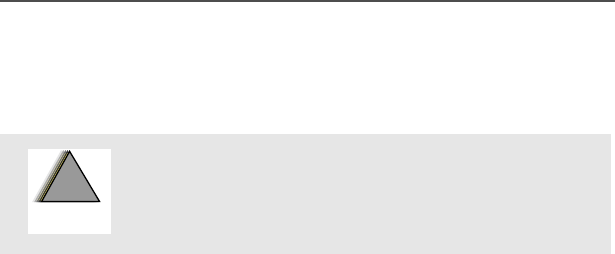
8
General Radio Operation
Standard Accessories
Battery
Charge the Battery
The Motorola approved battery shipped with your radio is uncharged.
Prior to using a new battery, charge it for a minimum of 16 hours to
ensure optimum capacity and performance.
For a list of Motorola approved batteries available for use with your
XTS 2500 radio, see “Batteries” on page 43.
Note: When charging a battery attached to a radio, turn the radio off
to ensure a full charge.
Battery Charger
To charge the battery, place the battery, with or without radio, in a
Motorola-approved charger. The charger’s LED indicates the charg-
ing progress; see your charger’s user guide. For a list of chargers,
see “Chargers” on page 44.
To avoid a possible explosion:
• DO NOT replace the battery in any area
labeled “hazardous atmosphere”.
• DO NOT discard batteries in a fire.
!
W
A R N I N
G
!
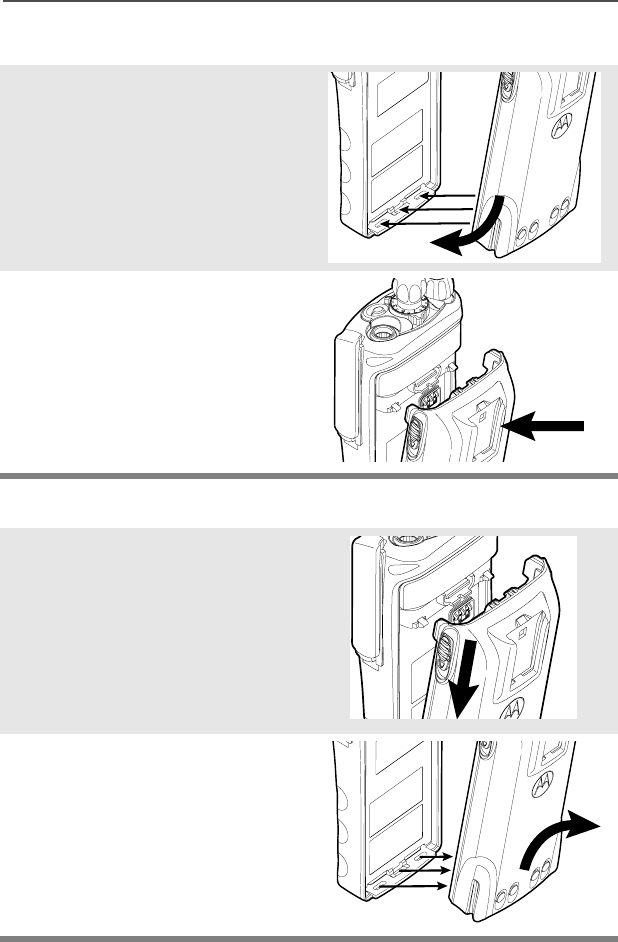
ASTRO XTS 2500 Model I 9
General Radio Operation
Attach the Battery
Remove the Battery
1With the radio off, fit the
three extensions at the
bottom of the battery into the
bottom slots on the radio.
2Press the top of the battery
against the radio until both
latches click into place.
1With the radio off, slide down
the latches on the sides of
the battery.
2Pull the top of the battery
away from the radio.
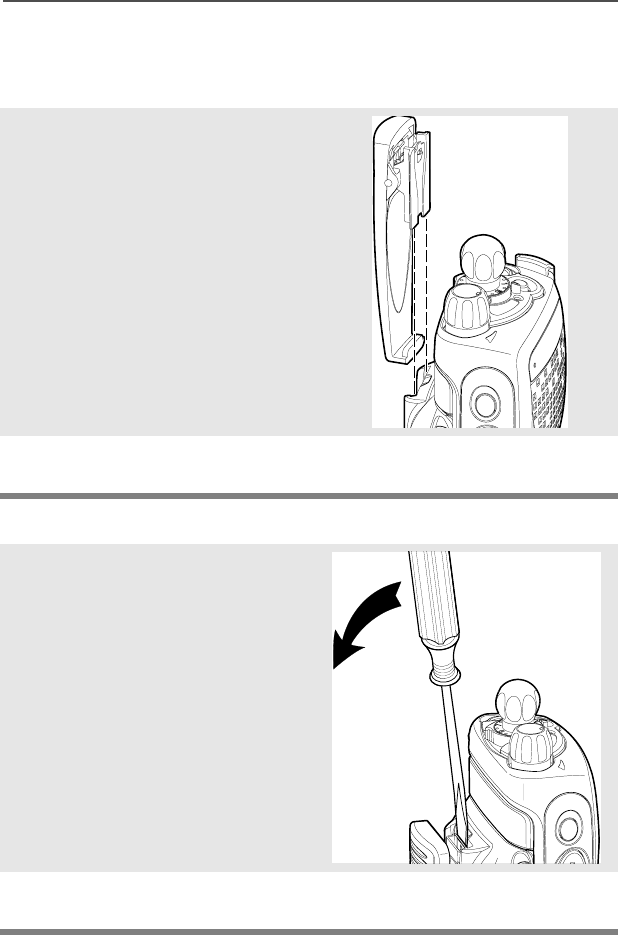
ASTRO XTS 2500 Model I 11
General Radio Operation
Belt Clip
Attach the Belt Clip
Remove the Belt Clip
1Align the grooves of the belt
clip with those of the battery.
2Press the belt clip downward
until you clear a “click.”
1Use a flat-bladed object to
press the belt clip tab away
from the battery.
2Slide the belt clip upward to
remove it.
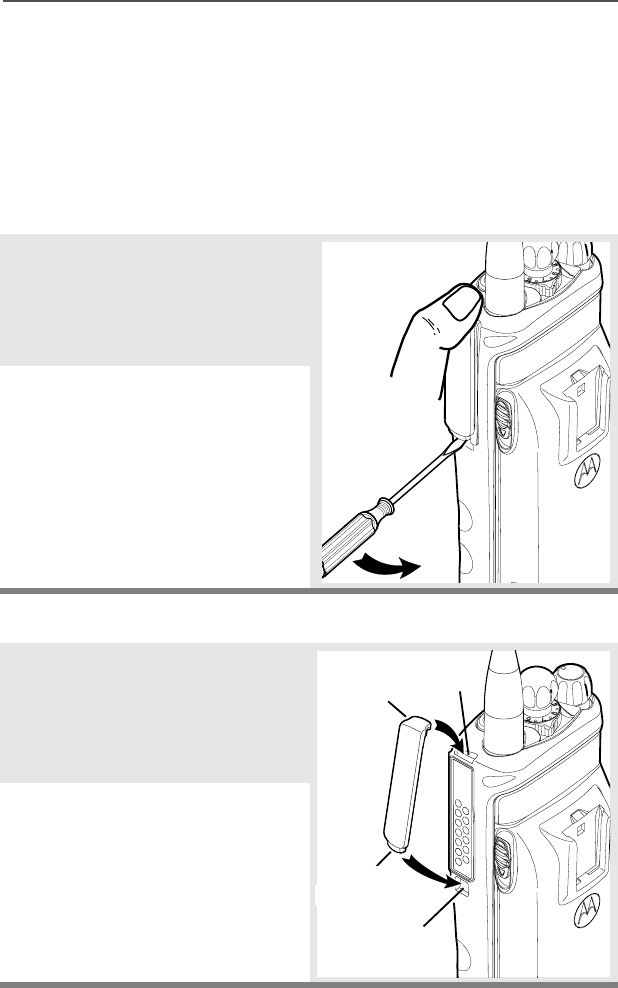
12
General Radio Operation
Universal Connector Cover
The universal connector cover is located on the antenna side of the
radio. It is used to connect certain accessories to the radio.
Note: To prevent damage to the connector, shield it with the
connector cover when not in use.
Remove the Connector Cover
Attach the Connector Cover
1Insert a flat-bladed
screwdriver into the area
between the bottom of the
cover and the slot below the
connector.
2Hold the top of the cover with
your thumb while you pry the
bottom of the cover away
from the radio with the
screwdriver.
1Insert the hooked end of the
cover into the top of the
connector. Press downward
on the cover’s top to seat it
into the slot.
2Press the cover’s lower tab
below the connector until it
snaps in place.
Top
Slot
Bottom
Slot
Top
Hooked End
Bottom
H
ooked End
Tab

ASTRO XTS 2500 Model I 13
General Radio Operation
Remote Speaker Microphone Adapter
The Remote Speaker Microphone (RSM) adapter is located on the
back of the radio, just above the battery. It must be used to connect
the RSM accessories (see page 45) to the radio. If the RSM is not
used, the adapter should be removed.
Remove the Adapter
Attach the Adapter
Lift the larger side (below the
antenna port) of the adapter
away from the radio using your
finger.
If you cannot easily remove the
adapter with your finger, use a
small, flat blade screwdriver to
pry the larger end side of the
adapter away from the radio.
1With the Motorola side of the
adapter facing out, snap the
smaller end of the adapter
into place in the shroud
indent, below the On/Off
Volume Control Knob.
2Snap the larger end of the
adapter into place in the
shroud indent, below the
antenna port.
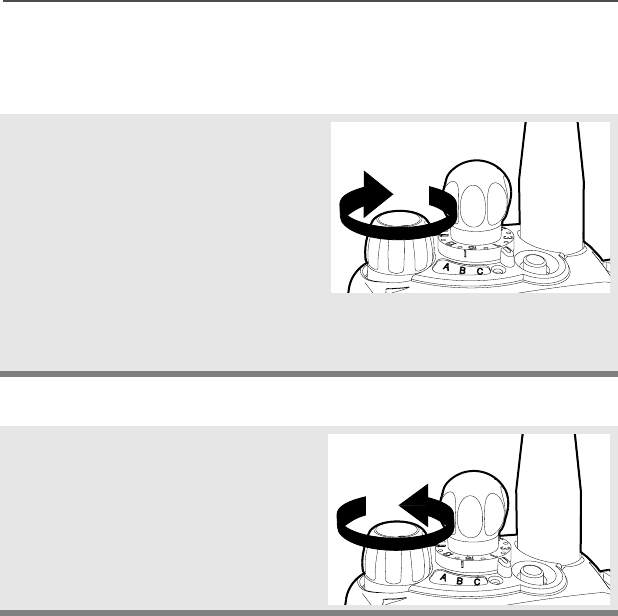
14
General Radio Operation
Radio On and Off
Turn the Radio On
Turn the Radio Off
Turn the On/Off/Volume
Control knob clockwise.
• If the test is successful,
you hear a medium-
pitched tone.
• If the test is unsuccessful,
you hear a low-pitched
tone. Turn off the radio,
check the battery, and turn
the radio on.
Turn the On/Off/Volume
Control knob
counterclockwise until it
clicks.

ASTRO XTS 2500 Model I 15
General Radio Operation
Zones and Channels
A zone is a grouping of channels. A channel is a group of radio char-
acteristics, such as transmit/receive frequency pairs.
Before you use your radio to receive or send messages, you should
select the zone.
Select a Zone
Select a Channel
1If a control on your radio has
been preprogrammed as the
Zone switch, move the Zone
switch to the position for the
zone you want.
2If the zone you selected is
unprogrammed, you hear a
long, medium-pitched tone
until you select a
programmed zone.
• Long, medium-pitched tone
1After you selected the zone
you want, turn the
preprogrammed Channel
Selector switch to the
desired channel.
2If the channel you selected is
unprogrammed, you hear a
long, medium-pitched tone
until you select a
programmed channel.
• Long, medium-pitched tone
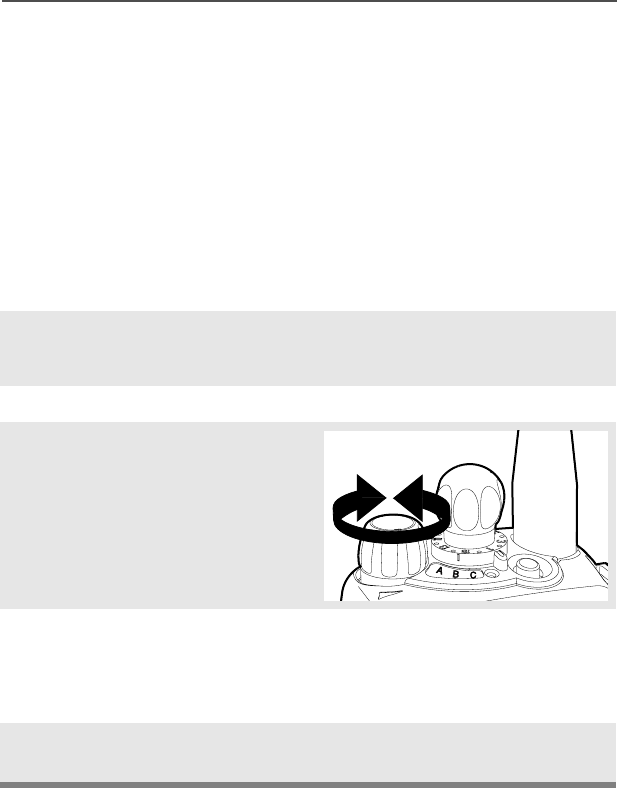
16
General Radio Operation
Receive / Transmit
Radio users who switch from analog to digital radios often assume
that the lack of static on a digital channel is an indication that the radio
is not working properly. This is not the case. Digital technology quiets
the transmission by removing the “noise” from the signal and allowing
only the clear voice or data information to be heard.
This section emphasizes the importance of knowing how to monitor a
channel for traffic before keying-up to send a transmission.
Without Using the Volume Set and Monitor Buttons
1Turn the radio on and select
the desired zone and
channel.
2Listen for a transmission.
3Adjust the Volume Control
knob if necessary.
4Press and hold the PTT
button to transmit. The LED
lights RED while
transmitting.
5Release the PTT button to
receive (listen).
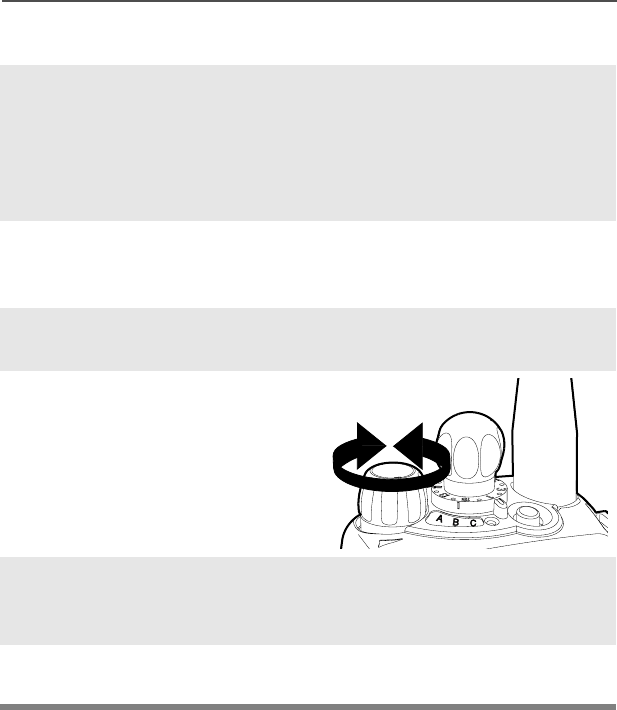
ASTRO XTS 2500 Model I 17
General Radio Operation
Use the Preprogrammed Volume Set Button
1Turn the radio on and select
the desired zone and
channel. See Turn the
Radio On, page 14 and
Zones and Channels, page
15.
2Press and hold the Volume
Set button to hear the
volume set tone.
3Release the Volume Set
button.
4Adjust the Volume Control
Knob if necessary.
5Press and hold the PTT
button to transmit. LED lights
RED while transmitting.
6Release the PTT button to
receive (listen).
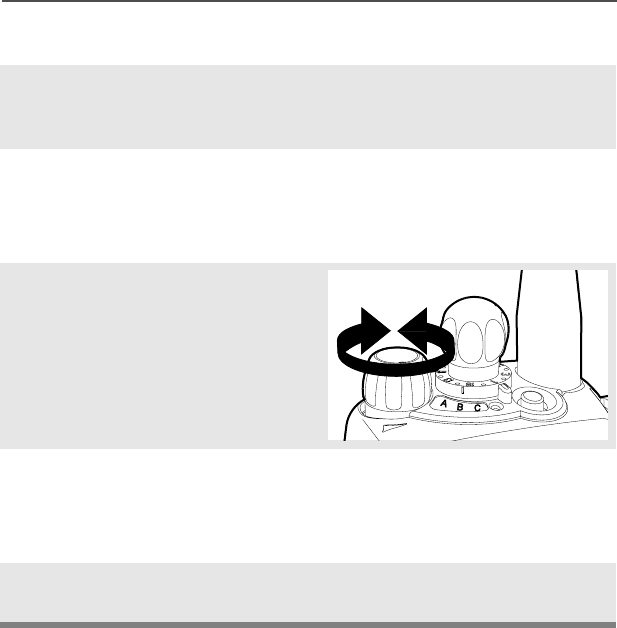
18
General Radio Operation
Use the Preprogrammed Monitor Button
1Turn the radio on and select
the desired zone and
channel.
2Press the Monitor button and
listen for activity. (See the
following Conventional
Mode Operation.)
3Adjust the Volume Control
knob if necessary.
4Press and hold the PTT
button to transmit. The LED
lights RED while
transmitting.
5Release the PTT button to
receive (listen).
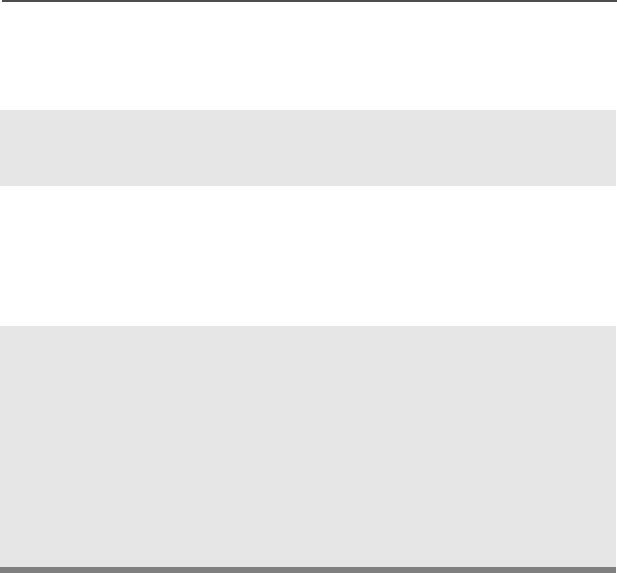
ASTRO XTS 2500 Model I 19
General Radio Operation
Conventional Mode Operation
Your radio may be programmed to receive Private-Line® (PL) calls.
1Momentarily press the
Monitor button to listen for
activity.
2Press and hold the Monitor
button to set continuous
monitor operation. (The
duration of the button press
is programmable.)
3Press the Monitor button
again, or the PTT button, to
return to the original squelch
setting.
Note: If you try to transmit on a
receive-only channel,
you will hear an invalid
tone until you release the
PTT button.

20
General Radio Operation
Notes
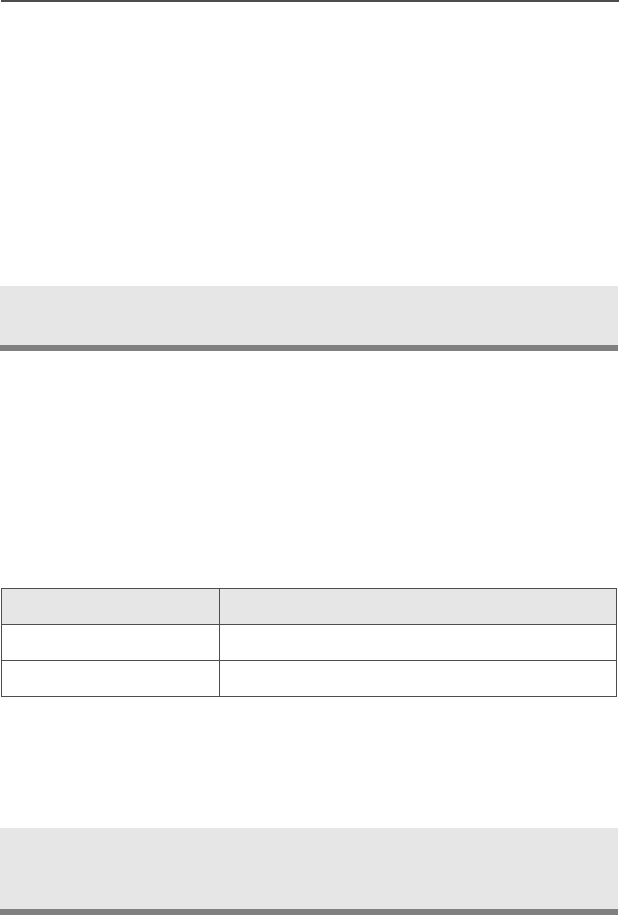
ASTRO XTS 2500 Model I 21
Common Radio Features
Selectable Power Level
This feature lets you select the power level at which your radio will
transmit. The radio will always turn on to the preprogrammed default
setting. This feature must be programmed by a qualified radio
technician.
•Select LOW for a shorter transmitting distance and to conserve
power.
•Select HIGH for longer transmitting distance.
Note: The default setting returns when you turn the radio off and on.
Conventional Squelch Options
Analog Squelch
Tone Private Line (PL), Digital Private-Line (DPL), and carrier squelch
can be available (preprogrammed) per channel.
PL Defeat
With this feature, you can override any coded squelch (DPL, PL, or
network ID) that might be programmed to a channel.
Place the preprogrammed Transmit Power Level switch in the
high-power or low-power position.
When in... this condition occurs:
Carrier squelch You hear all traffic on a channel.
PL, DPL The radio responds only to your messages.
Place the preprogrammed PL Defeat switch in the PL Defeat
position. You can now hear any activity on the channel. The
radio is muted if no activity is present.

22
Common Radio Features
Time-out Timer
The time-out timer turns off your radio’s transmitter. The timer is set
for 60 seconds at the factory, but it can be programmed from 0 to 7.75
minutes (465 seconds) by a qualified radio technician.
1Hold down the PTT longer
than the programmed time.
You will hear a short, low-
pitched warning tone, the
transmission is cut-off, and
the LED will go out until you
release the PTT.
• Short warning tone
• Transmission is cut-off
• LED goes out
2Release the PTT button. • LED re-lights
•Timer resets
3Press the PTT to re-transmit.
Time-out timer restarts.
• Timer restarts
•RED LED

ASTRO XTS 2500 Model I 23
Common Radio Features
Emergency
If the top (orange) button is programmed to send an emergency
signal, then this signal overrides any other communication over the
selected channel.
Your radio can be programmed for the following:
• Emergency Alarm
• Emergency Alarm with Emergency Call
• Silent Emergency Alarm
• Emergency Call
Consult a qualified radio technician for emergency programming of
your radio.

24
Common Radio Features
Send an Emergency Alarm
An Emergency Alarm will send a data transmission to the dispatcher,
identifying the radio sending the emergency.
1With your radio turned on,
press the Emergency
button. The red LED lights,
and you hear a short,
medium-pitched tone.
•Red LED
•Short tone
Note: To exit emergency at any time, press and hold the
Emergency button for about a second.
2When you receive the
dispatcher’s
acknowledgment, you hear
four tones, the alarm ends,
and the radio exits the
emergency mode.
If no acknowledgement is
received, the alarm ends and
the radio exits the
emergency mode.
• Four tones
• Alarm ends
• Radio exits emergency
• Alarm ends
• Radio exits emergency
Note: For Emergency Alarm with Emergency Call: The radio
enters the Emergency Call state either after it receives the
dispatcher’s acknowledgment, or if you press the PTT button
while in Emergency Alarm. Go to step 2 of “Send an
Emergency Call” on page 25.
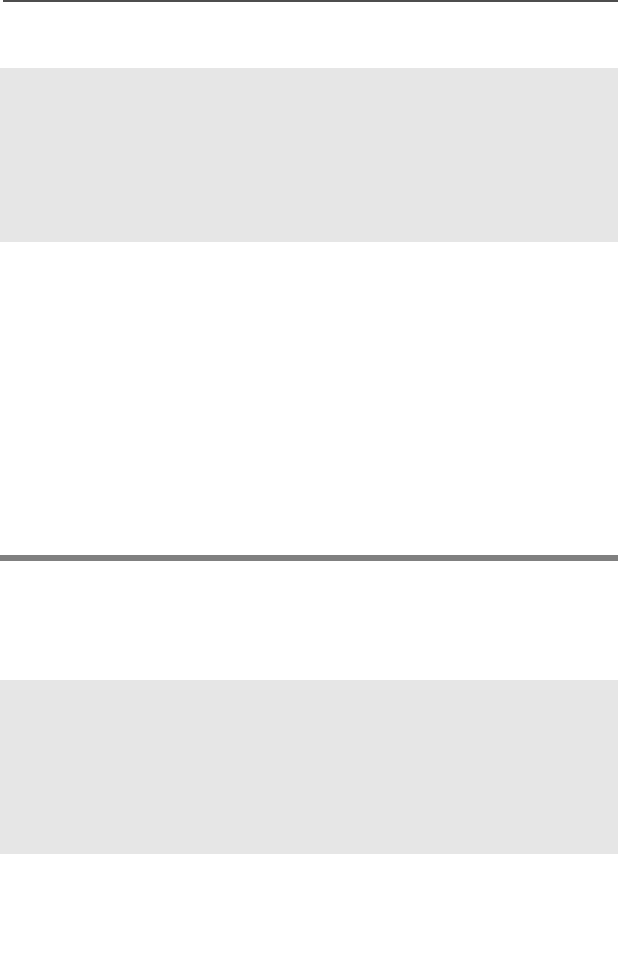
ASTRO XTS 2500 Model I 25
Common Radio Features
Send a Silent Emergency Alarm
Send an Emergency Call
An Emergency Call will send a type of dispatch giving your radio
priority access to channels.
1With your radio turned on,
press the Emergency
button. The LED does not
light, and you hear no tones.
• LED does not light
• No tones
Note: To exit emergency at any time, press and hold the
Emergency button for about a second.
2The silent emergency state
continues until you:
Press and hold the
Emergency button for about
a second to exit the
emergency state.
OR
Press and release the PTT
button to exit silent
emergency and enter regular
dispatch or emergency call.
• Press and hold Emergency
button
OR
• Press and release the PTT
button
1With your radio turned on,
press the Emergency
button. A short, medium-
pitched tone sounds.
• Short tone
Note: To exit emergency at any time, press and hold the
Emergency button.
2Press and hold the PTT
button and announce your
emergency into the
microphone.
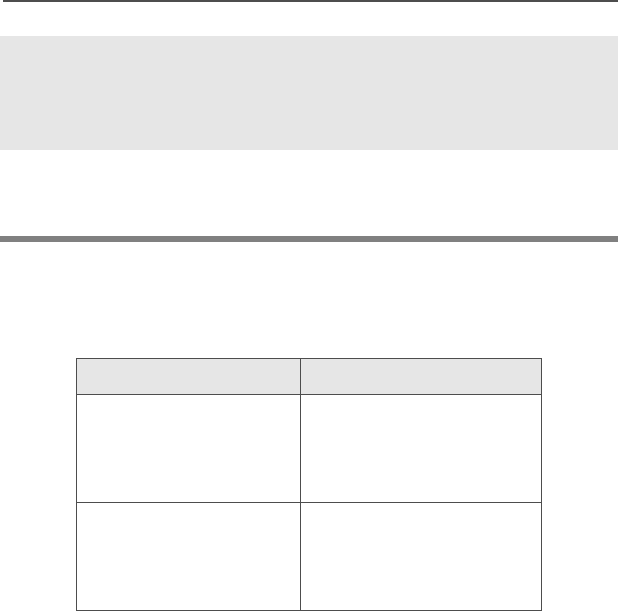
26
Common Radio Features
The radio operates in the normal dispatch manner while in
Emergency Call, except, if enabled, it will return to one of the
following:
Note: For ALL Emergency signals:
• You can change channels while in Emergency operation if the
new channel is also programmed for Emergency. The
emergency alarm or call continues on the new channel.
• If the new channel is NOT programmed for Emergency, an
invalid tone sounds until you exit the Emergency state or
change to a channel programmed for emergency.
3Release the PTT button to
end the transmission and
wait for a response from the
dispatcher.
4Press and hold the
Emergency button for about
a second to exit emergency.
Using this operation: means you will talk...
1. Tactical/Non-Revert on the channel you
selected before you
entered the emergency
state.
2. Non-Tactical/Revert on a preprogrammed
emergency channel. The
emergency alarm is sent
to this same channel.

ASTRO XTS 2500 Model I 27
Common Radio Features
Emergency Keep-Alive
With Emergency Keep-Alive enabled, if the radio is in the Emergency
state, you cannot turn off the radio by using the On/Off Volume
Control knob.
With Keep-Alive, the radio will only exit the Emergency state using
one of the ways mentioned in the previous sections (Emergency
Alarm, Silent Emergency Alarm, or Emergency Call).

28
Common Radio Features
Scan
The scan feature allows you to monitor traffic on different channels by
scanning a preprogrammed list of channels. The list must be
preprogrammed by a qualified technician.
Turn Scan On and Off
Use the Preprogrammed Scan On/Off Switch
Delete a Nuisance Channel
When the radio scans to a channel that you do not wish to hear
(nuisance channel), you can temporarily delete the channel from the
scan list.
Place the Scan On/Off
Switch in the “scan on” or
“scan off” position.
1When the radio is locked
onto the channel to be
deleted, press the
preprogrammed Nuisance
Delete button.
Repeat this step to delete
more channels.
Note: You cannot delete priority
channels or the
designated transmit
channel.
2The radio continues
scanning the remaining
channels in the list. To
resume scanning the deleted
channel, change channels or
turn scan off and then back
on again.

ASTRO XTS 2500 Model I 29
Common Radio Features
Conventional Scan Only
Make a Dynamic Priority Change
While the radio is scanning, the dynamic priority change feature lets
you temporarily change any channel in a scan list (except the priority-
one channel) to the priority-two channel. The replaced priority-two
channel becomes a non-priority channel. This change remains in
effect until scan is turned off, then scanning reverts back to the
preprogrammed state.
1When the radio is locked
onto the channel to be
designated as priority-two,
press the preprogrammed
Dynamic Priority button.
Note: The priority-one channel
cannot be changed to
priority-two.
2The radio continues
scanning the remaining
channels in the list. To
resume scanning the
preprogrammed priority-two
channel, you must leave and
re-enter scan operation.
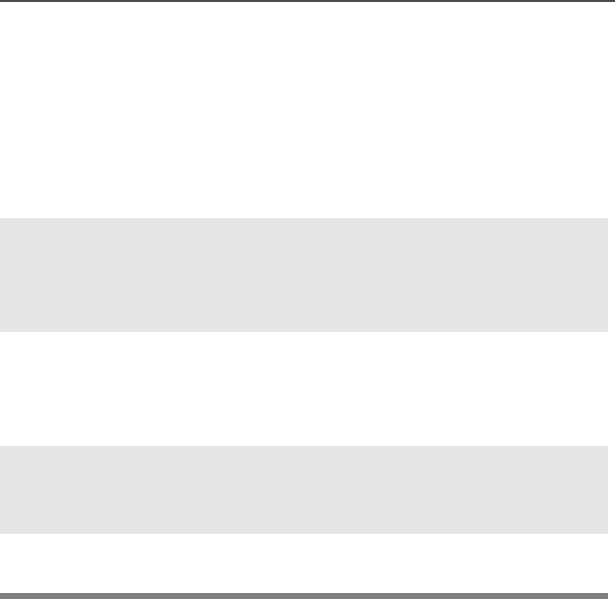
30
Common Radio Features
Telephone Calls (Trunking Only)
Use your radio to receive standard phone calls. A landline phone can
be used to call a radio.
Answer a Phone Call
Use the Preprogrammed Call Response Button
1When a phone call is
received you hear
telephone-type ringing and
the LED flashes GREEN.
• Telephone-type ringing
• LED flashes GREEN
2Press the Call Response
button within 20 seconds
after the call indicators
begin.
3Press and hold the PTT
button to talk; release it to
listen.
4Press the Call Response
button to hang up.
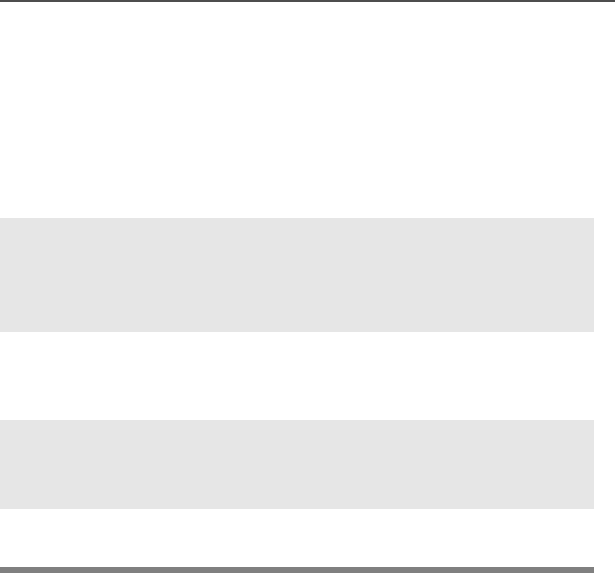
ASTRO XTS 2500 Model I 31
Common Radio Features
Private Calls (Trunking Only)
These one-to-one calls between two radios are not heard by others in
the current talkgroup.
Answer a Private Call
Use the Preprogrammed Call Response Button.
1When a private call is
received you hear two alert
tones and the LED flashes
GREEN.
• Two alert tones
• LED flashes GREEN
2Press the preprogrammed
Call Response button
within 20 seconds.
3Press and hold the PTT
button to talk; release it to
listen.
4Press the Call Response
button to hang up.

32
Common Radio Features
Call Alert Paging
Call Alert allows your radio to work like a pager.
Answer a Call Alert Page
1When a Call Alert Page is
received, you hear four
repeating alert tones and
the LED flashes GREEN.
• Four repeating tones
• LED flashes GREEN
2Press and hold the PTT
button to talk, release it to
listen.

ASTRO XTS 2500 Model I 33
Common Radio Features
Repeater or Direct Operation
Also known as TALKAROUND operation, DIRECT lets you bypass
the repeater and connect directly to another radio. The transmit and
receive frequencies are the same.
REPEATER operation increases the radio’s range by connecting with
other radios through a repeater. Transmit and receive frequencies are
different.
Select Repeater or Direct Operation
Place the preprogrammed
Repeater/Direct switch in
Repeater or Direct position.

34
Common Radio Features
Notes

ASTRO XTS 2500 Model I 35
Special Radio Features
Trunking System Controls
Failsoft
The failsoft system ensures continuous radio communications during
a trunked system failure. If a trunking system fails completely, the
radio goes into failsoft operation, and automatically switches to its
failsoft channel.
During failsoft operation:
When the trunking system returns to normal operation, your radio
automatically leaves failsoft operation and returns to trunked
operation.
Out-of-Range
If you go out of the range of the system, and can no longer lock onto a
control channel, you hear a low-pitched tone.
Your radio remains in this out-of-range condition until
• It locks onto a control channel,
• It locks onto a failsoft channel, or
• It is turned off.
• Your radio transmits and
receives in conventional
operation on a predetermined
frequency.
• You hear a medium-pitched
tone every 10 seconds.

36
Special Radio Features
Site Lock
This feature allows your radio to lock onto a specific site and not roam
among wide-area talkgroup sites. This feature should be used with
caution, since it inhibits roaming to another site in a wide-area
system.
Lock or Unlock a Site
Site Change
You can force your radio to change to a new site.
Change the Current Site
Press the preprogrammed
Site Lock/Unlock button.
• The site lock state changes.
1Press and hold down the
preprogrammed Site
Search button to manually
force the change to a new
site. You hear a tone while
the radio scans for a new
site.
• Tone sounds
2When the radio finds a new
site, the tone stops.
• Tone stops

ASTRO XTS 2500 Model I 37
Helpful Tips
Radio Care
Cleaning
To clean the external surfaces of your radio:
1Combine one teaspoon of mild dishwashing detergent to one
gallon of water (0.5% solution).
2Apply the solution sparingly with a stiff, non-metallic, short-
bristled brush, making sure excess detergent does not get
entrapped near the connectors, controls or crevices. Dry the
radio thoroughly with a soft, lint-free cloth.
3Clean battery contacts with a lint-free cloth to remove dirt or
grease.
Handling
• Do not pound, drop, or throw the radio. Never carry the radio by
the antenna.
• Avoid subjecting the radio to an excess of liquids.
• Avoid subjecting the radio to corrosives, solvents or spirits.
• Do not disassemble the radio.
• Keep the accessory-connector cover in place until ready to use
the connector. Replace the cover immediately once the accessory
has been disconnected.
Do not use solvents to clean your radio. Spirits may
permanently damage the radio housing.
Do not submerge the radio in the detergent solution.
!
C a u t i o n

38
Helpful Tips
Service
Proper repair and maintenance procedures will assure efficient
operation and long life for this product. A Motorola maintenance
agreement will provide expert service to keep this and all other
communication equipment in perfect operating condition. A
nationwide service organization is provided by Motorola to support
maintenance services. Through its maintenance and installation
program, Motorola makes available the finest service to those
desiring reliable, continuous communications on a contract basis. For
a contract service agreement, please contact your nearest Motorola
service or sales representative, or an authorized Motorola dealer.
Express Service Plus (ESP) is an optional extended service coverage
plan, which provides for the repair of this product for a period of three
years from the date of shipment from the factory, or the date of
delivery if purchased from an authorized Motorola two-way radio
dealer. For more information about ESP, contact the Motorola Radio
Support Center, 2204 Galvin Drive, Elgin, IL 60123, 1-800-227-6772.

ASTRO XTS 2500 Model I 39
Helpful Tips
Battery
Battery Life
Battery life is determined by several factors. Among the more critical
are the regular overcharge of batteries and the average depth of
discharge with each cycle. Typically, the greater the overcharge and
the deeper the average discharge, the fewer cycles a battery will last.
For example, a battery which is overcharged and discharges 100%
several times a day, will last fewer cycles than a battery that receives
less of an overcharge and is discharged to 50% per day. Further, a
battery which receives minimal overcharging and averages only 25%
discharge, will last even longer.
Charging the Battery
Motorola batteries are designed specifically to be used with a
Motorola charger and vice-versa. Charging in non-Motorola
equipment may lead to battery damage and void the battery warranty.
Motorola-authorized battery chargers may not charge batteries other
than the ones listed on page 43.
The battery should be at about 77°F (25°C) (room temperature),
whenever possible. Charging a cold battery (below 50° F [10°C]) may
result in leakage of electrolyte and ultimately in failure of the battery.
Charging a hot battery (above 95°F [35°C]) results in reduced
discharge capacity, affecting the performance of the radio. Motorola
rapid-rate battery chargers contain a temperature-sensing circuit to
ensure that batteries are charged within the temperature limits stated
above.
Battery Charge Status
Your radio can indicate your battery’s charge status via LED
indications and sounds:
• you see the LED flash red when the PTT button is pressed,
indicating low battery
• you hear a low-battery “chirp” (short, high-pitched tone)

40
Helpful Tips
Battery Recycling and Disposal
Nickel-cadmium (NiCd) rechargeable batteries can be recycled.
However, recycling facilities may not be available in all areas. Under
various U.S. state laws and the laws of several other countries, NiCd
batteries must be recycled and cannot be disposed of in landfills or
incinerators. Contact your local waste management agency for
specific requirements and information in your area.
Motorola fully endorses and encourages the recycling of NiCd
batteries. In the U.S. and Canada, Motorola participates in the
nationwide Rechargeable Battery Recycling Corporation (RBRC)
program for NiCd battery collection and recycling. Many retailers and
dealers participate in this program.
For the location of the drop-off facility closest to you, access RBRC's
Internet web site at www.rbrc.com or call 1-800-8-BATTERY. This
internet site and telephone number also provide other useful
information concerning recycling options for consumers, businesses,
and governmental agencies.
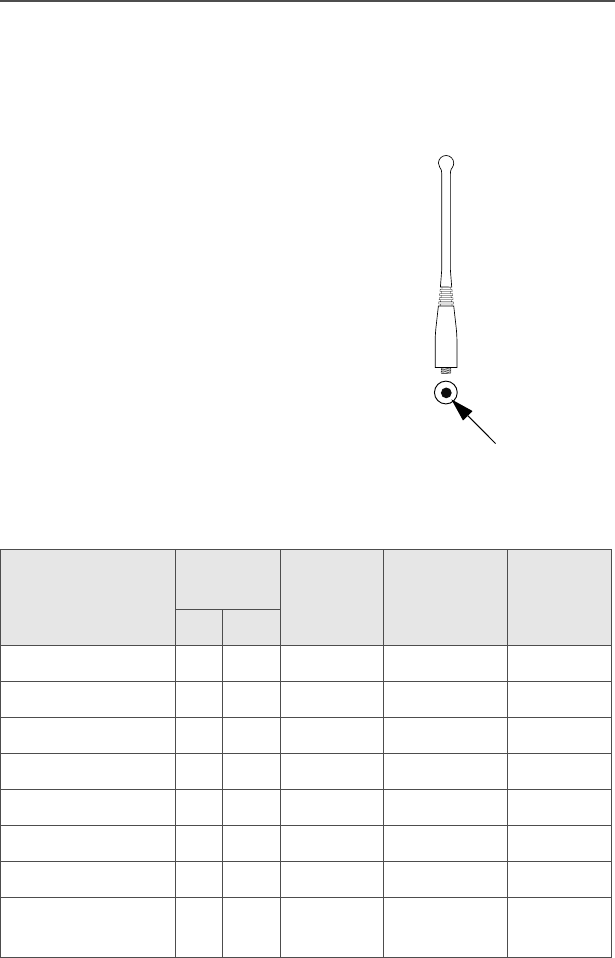
ASTRO XTS 2500 Model I 41
Helpful Tips
Antenna
Radio Operating Frequencies
The following antenna types are compatible with your radio:
Before installing the antenna,
make sure it matches your
radio’s operating frequency.
Antennas are frequency
sensitive and are color coded
according to their frequency
range. The color code indicator
is located in the center of the
antenna’s base.
Antenna Type
Approx.
Length Insulator
Color
Code
Frequency
Range
(MHz)
Antenna
Kit No.
in. mm
VHF whip 8 203 RED 136–174 NAD6563
VHF helical 7.6 193 YELLOW 136–150.8 NAD6566
VHF helical 7 178 BLACK 150.8–162 NAD6567
VHF helical 6.5 165 BLUE 162–174 NAD6568
UHF helical 3.4 88 RED 403–435 NAE6546
UHF helical 3.2 80 GREEN 435–470 NAE6547
UHF helical 3.2 79 BLACK 470–520 NAE6548
UHF whip,
wideband
5.2 130 GRAY 403–520 NAE6549
color

42
Helpful Tips
800 MHz whip,
halfwave
7 178 RED 806–870 NAF5037
800 MHz dipole 8 200 RED 806–870 NAF5039
800 MHz stubby,
quarterwave
3.4 86 WHITE 806–870 NAF5042
700/800 MHz
whip
7 178 GREEN 764–870 NAF5080
Antenna Type
Approx.
Length Insulator
Color
Code
Frequency
Range
(MHz)
Antenna
Kit No.
in. mm

ASTRO XTS 2500 Model I 43
Accessories
Motorola provides the following approved accessories to improve the
productivity of your XTS 2500 portable two-way radio.
For a list of Motorola-approved antennas, batteries, and other
accessories, visit the following web site which lists approved
accessories: http://www.motorola.com/cgiss/index.shtml
Antennas
Batteries
NAD6563 VHF whip (136–174 MHz)
NAD6566 VHF (136–150.8 MHz)
NAD6567 VHF (150.8–162 MHz)
NAD6568 VHF (162–174 MHz)
NAE6546 UHF (380–435 MHz)
NAE6547 UHF (435–470 MHz)
NAE6548 UHF (470–520 MHz)
NAE6549 UHF whip (380–520 MHz)
NAF5037 800 MHz whip, halfwave (806–870 MHz)
NAF5039 800 MHz dipole (806–870 MHz)
NAF5042 800 MHz stubby, quarterwave (806–870 MHz)
NAF5080 700/800 MHz whip (764–870 MHz)
NTN9815 NiCd high-capacity
NTN9816 NiCd high-capacity, Factory Mutual Intrinsically Safe
NTN9857 NiMH ultra-high-capacity, Factory Mutual
Intrinsically Safe
NTN9858 NiMH ultra-high-capacity
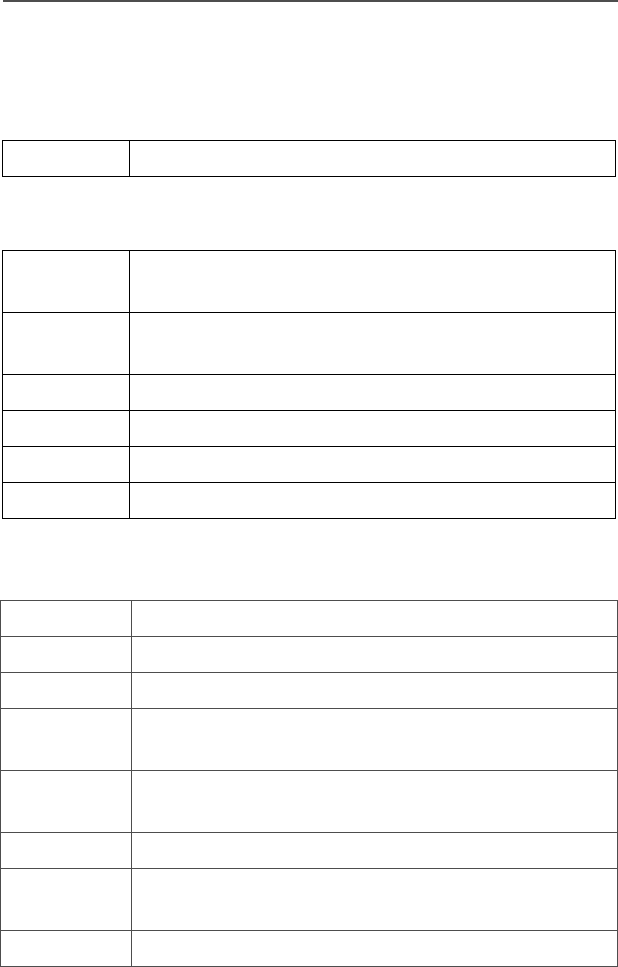
44
Accessories
Carry Accessories
Belt Clips
Body-Worn
Chargers
HLN6853 Belt clip, 2 1/4 inch
NNTN4115 Carrying case, leather with 3-in. swivel belt loop and
T-strap
NNTN4116 Carrying case, leather with 2.5-in. swivel belt loop
and T-strap
NNTN4117 Carrying case, leather with 3-in. belt loop and T-strap
NLN6349 Shoulder strap for carrying radio
NTN5243 Shoulder strap for carrying radio
TDN9675 Wrist strap for carrying radio
NLN7967 Wall-mount kit for multi-unit charger
NLN7968 Rack-mount kit for multi-unit charger
NTN1168 Single-unit dual rate, rapid charger 120V
NTN1169 Single-unit dual rate, rapid charger 220V (2-prong
Euro plug)
NTN1170 Single-unit dual rate, rapid charger 240V (3-prong UK
plug)
NTN1177 Multi-unit, dual rate, rapid charger 110V
NTN1178 Multi-unit, dual rate, rapid charger 240V (3-prong UK
plug)
NTN1179 Multi-unit, rapid charger 240V (UK 13 MAP Plug)
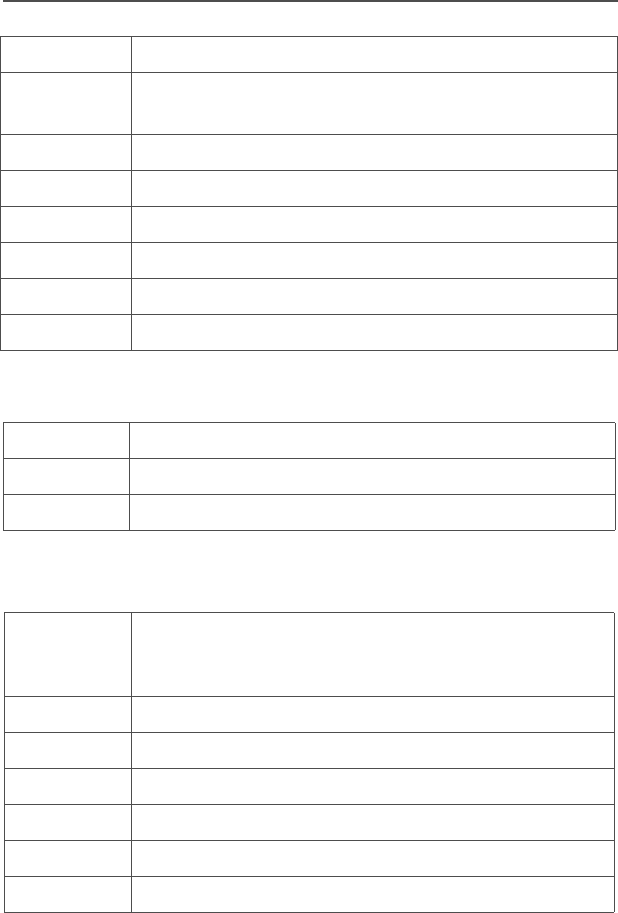
ASTRO XTS 2500 Model I 45
Accessories
Enhanced and Multi-Unit Line Cords
Microphones, Remote Speaker
NTN1667 Tri-chemistry, 110V
NTN1668 Tri-Chemistry, 220V Single Unit Charger (2 Prong
Euro Plug)
NTN1669 Tri-chemistry, 230V
NTN1873 IMPRES™ rapid charger 110V single-unit
NTN1874 IMPRES™ rapid charger 220V single-unit
NTN1875 IMPRES™ rapid charger 240V single-unit
NTN4796 Multi-unit, tri-chemistry, rapid rate, 110V
NTN7209 Single-unit dual rate, rapid charger w/o cord
NTN7373 110V interchangeable line
NTN7374 220V interchangeable line (2-prong Euro plug)
NTN7375 240V interchangeable line (3-prong UK plug)
NMN6191 Remote speaker mic, noise-canceling (includes 6.0-ft
coiled cord assembly, 3.5-mm earjack, swivel clip,
quick disconnect)
NMN6193 Remote speaker mic
NNTN4285 Remote speaker mic adapter
ZMN6031 Speaker mic, 3-piece
ZMN6032 Speaker mic, 2-piece
ZMN6038 Speaker mic, 2-piece, extra loud
ZMN6039 Speaker mic, 3-piece, extra loud

46
Accessories
Surveillance Accessories
CommPort® Integrated Microphone/Receivers
Earpieces
NTN1624 CommPort with palm PTT
NTN1625 CommPort ear mic with PTT for noise levels up to
100 dB (requires BDN6676 adapter)
NTN1663 CommPort ear mic with ring PTT for noise levels up
to 100 dB (requires BDN6676 adapter)
NTN1736 CommPort ear mic with snap-on side PTT for noise
levels up to 100 dB (requires BDN6676 adapter)
BDN6641 Ear mic, high noise level up to 105 dB, grey (must
order BDN6671 interface module)
BDN6664 Earpiece with standard earphone, beige
BDN6665 Earpiece with extra-loud earphone (exceeds OSHA
limits), beige
BDN6666 Earpiece with volume control, beige
BDN6667 Earpiece, mic and PTT combined, beige
BDN6668 Earpiece, mic and PTT separate, beige
BDN6669 Earpiece, mic and PTT combined, with extra-loud
earphone (exceeds OSHA limits), beige
BDN6670 Earpiece, mic and PTT separate with extra-loud ear-
phone (exceeds OSHA limits), beige
BDN6677 Ear mic, standard, noise up to 95 dB (must order
BDN6671 interface module), black
BDN6678 Ear mic, standard, noise up to 95 dB (must order
BDN6671 interface module), beige
BDN6719 Earpad, with 3.5mm threaded plug

ASTRO XTS 2500 Model I 47
Accessories
Headsets and Headset Accessories
BDN6726 Earpiece with standard earphone, black
BDN6727 Earpiece with extra-loud earphone (exceeds OSHA
limits), black
BDN6728 Earpiece with volume control, black
BDN6729 Earpiece, mic and PTT combined, black
BDN6730 Earpiece, mic and PTT separate, black
BDN6731 Earpiece, mic and PTT combined, with extra-loud
earphone (exceeds OSHA limits), black
BDN6732 Earpiece, mic and PTT separate, with extra-loud
earphone (exceeds OSHA limits), black
BDN6780 Earbud, single with mic and PTT combined, beige
BDN6781 Earbud, single, receive only, black
BDN6635 Heavy-duty VOX headset with noise-canceling
boom mic (requires BDN6673 adapter)
BDN6636 Heavy-duty VOX headset with throat mic (requires
BDN6673)
BDN6645 Noise-canceling boom mic headset with PTT on
earcup
BDN6673 Headset adapter cable (for use with BDN6635 and
BDN6645)
BDN6676 Jedi adapter
NMN1020 Safety helmet headset (requires BDN6676 adapter)
NMN6245 Light-weight headset
NMN6246 Ultralite headset with boom mic
NMN6258 Over-the-head headset with in-line PTT
NMN6259 Medium-weight, dual headset with NC mic
RMN4049 Jedi “TEMCO” temple transducer

48
Accessories
Radio Interface Modules for Ear Microphones
Switches
BDN6671 Push-to-talk (PTT) and voice-activated (VOX) inter-
face module (for use with BDN6641, BDN6677 and
BDN6678)
BDN6708 PTT interface module (for use with BDN6641,
BDN6677 and BDN6678)
0180300E83 Remote PTT body switch
NTN7660 Tilt / man down switch

ASTRO XTS 2500 Model I 49
Appendix: Maritime Radio Use in the
VHF Frequency Range
Special Channel Assignments
Emergency Channel
If you are in imminent and grave danger at sea and require
emergency assistance, use VHF Channel 16 to send a distress call
to nearby vessels and the United States Coast Guard. Transmit the
following information, in this order:
1“MAYDAY, MAYDAY, MAYDAY.”
2“THIS IS _____________________, CALL SIGN __________.”
State the name of the vessel in distress 3 times, followed by the
call sign or other identification of the vessel, stated 3 times.
3Repeat “MAYDAY” and the name of the vessel.
4“WE ARE LOCATED AT _______________________.”
State the position of the vessel in distress, using any information
that will help responders to locate you, e.g.:
• latitude and longitude
• bearing (state whether you are using true or magnetic north)
• distance to a well-known landmark
• vessel course, speed or destination
5State the nature of the distress.
6Specify what kind of assistance you need.
7State the number of persons on board and the number needing
medical attention, if any.
8Mention any other information that would be helpful to
responders, such as type of vessel, vessel length and/or
tonnage, hull color, etc.
9“OVER.”
10 Wait for a response.
11 If you do not receive an immediate response, remain by the radio
and repeat the transmission at intervals until you receive a
response. Be prepared to follow any instructions given to you.

50
Appendix: Maritime Radio Use in the VHF Frequency Range
Non-Commercial Call Channel
For non-commercial transmissions, such as fishing reports,
rendezvous arrangements, repair scheduling, or berthing
information, use VHF Channel 9.
Operating Frequency Requirements
A radio designated for shipboard use must comply with Federal
Communications Commission Rule Part 80 as follows:
• on ships subject to Part II of Title III of the Communications Act,
the radio must be capable of operating on the 156.800 MHz
frequency
• on ships subject to the Safety Convention, the radio must be
capable of operating:
• in the simplex mode on the ship station transmitting
frequencies specified in the 156.025–157.425 MHz frequency
band, and
• in the semiduplex mode on the two frequency channels
specified in the table below.
Note: Simplex channels 3, 21, 23, 61, 64, 81, 82, and 83 cannot be
lawfully used by the general public in US waters.
Additional information about operating requirements in the Maritime
Services can be obtained from the full text of FCC Rule Part 80 and
from the US Coast Guard.
Table A-1: VHF Marine Channel List
Channel
Number
Frequency (MHz)
Transmit Receive
1 156.050 160.650
2 156.100 160.700
* 156.150 160.750
4 156.200 160.800
5 156.250 160.850
6 156.300 –
7 156.350 160.950
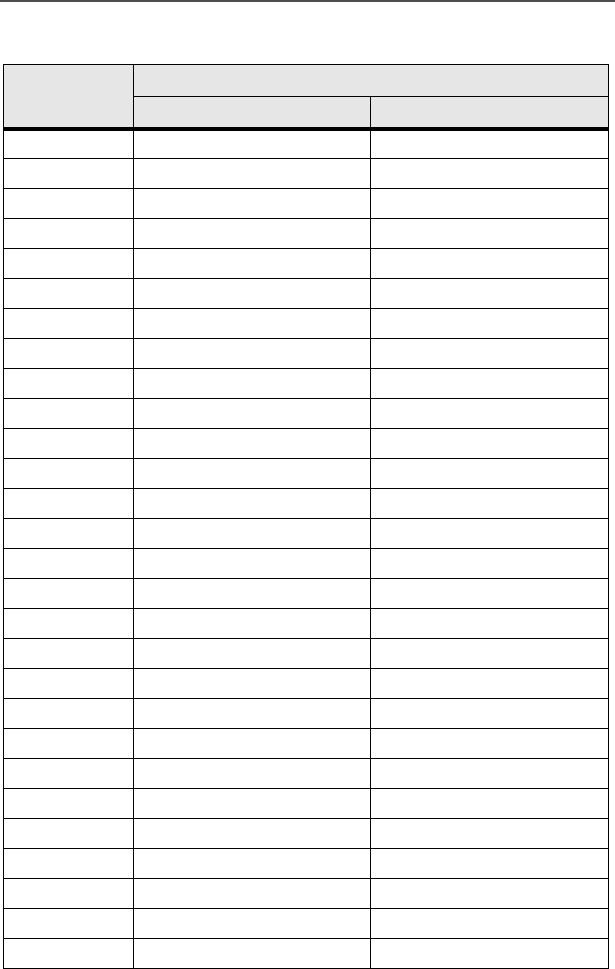
ASTRO XTS 2500 Model I 51
Appendix: Maritime Radio Use in the VHF Frequency Range
8 156.400 –
9 156.450 156.450
10 156.500 156.500
11 156.550 156.550
12 156.600 156.600
13** 156.650 156.650
14 156.700 156.700
15** 156.750 156.750
16 156.800 156.800
17** 156.850 156.850
18 156.900 161.500
19 156.950 161.550
20 157.000 161.600
* 157.050 161.650
22 157.100 161.700
* 157.150 161.750
24 157.200 161.800
25 157.250 161.850
26 157.300 161.900
27 157.350 161.950
28 157.400 162.000
60 156.025 160.625
* 156.075 160.675
62 156.125 160.725
63 156.175 160.775
* 156.225 160.825
65 156.275 160.875
66 156.325 160.925
Table A-1: VHF Marine Channel List (Continued)
Channel
Number
Frequency (MHz)
Transmit Receive
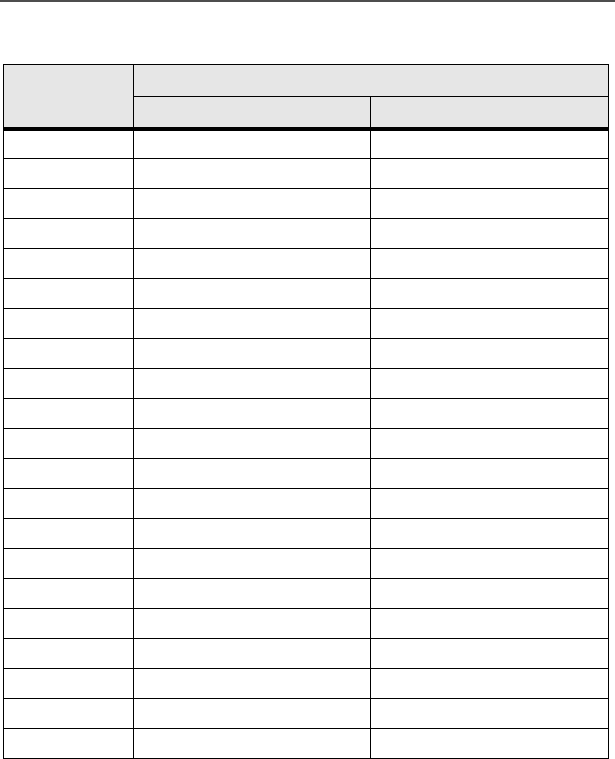
52
Appendix: Maritime Radio Use in the VHF Frequency Range
* Simplex channels 3, 21, 23, 61, 64, 81, 82, and 83 cannot be
lawfully used by the general public in US waters.
** Low power (1 W) only
*** Guard band
Note: A – in the Receive column indicates that the channel is transmit
only.
67** 156.375 156.375
68 156.425 156.425
69 156.475 156.475
71 156.575 156.575
72 156.625 –
73 156.675 156.675
74 156.725 156.725
75 *** ***
76 *** ***
77** 156.875 –
78 156.925 161.525
79 156.975 161.575
80 157.025 161.625
* 157.075 161.675
* 157.125 161.725
* 157.175 161.775
84 157.225 161.825
85 157.275 161.875
86 157.325 161.925
87 157.375 161.975
88 157.425 162.025
Table A-1: VHF Marine Channel List (Continued)
Channel
Number
Frequency (MHz)
Transmit Receive

ASTRO XTS 2500 Model I 53
Glossary
This is a list of specialized terms used in this manual.
ACK Acknowledgment of communication.
Active Channel A channel that has traffic on it.
Analog Signal An RF signal that has a continuous nature
rather than a pulsed or discrete nature.
ASTRO 25 Trunking Motorola standard for wireless digital trunked
communications.
ASTRO
Conventional
Motorola standard for wireless analog or
digital conventional communications.
Call Alert A page received by your radio, along with an
audible tone.
Carrier Squelch Feature that responds to the presence of an
RF carrier by opening or unmuting (turning
on) a receiver's audio circuit. A squelch circuit
silences the radio when no signal is being
received so that the user does not have to
listen to noise.
Central Controller A software controlled, computer-driven device
that receives and generates data for the
trunked radios assigned to it. It monitors and
directs the operations of the trunked
repeaters.
Channel A group of characteristics such as transmit/
receive frequency pairs, radio parameters,
and encryption encoding.
Control Channel In a trunking system, one of the channels that
is used to provide a continuous, two-way/data
communications path between the central
controller and all radios on the system.
Conventional Typically refers to radio-to-radio
communications, sometimes through a
repeater. (See Trunking.)

54
Glossary
Digital Private Line
(DPL)
A type of coded squelch using data bursts.
Similar to PL except a digital code is used
instead of a tone.
Digital Signal An RF signal that has a pulsed, or discrete
nature, rather than a continuous nature.
Dispatcher An individual who has radio system
management duties.
Dynamic
Regrouping
A feature that allows the dispatcher to
temporarily reassign selected radios to a
single special channel so they can
communicate with each other.
Failsoft A feature that allows communications to take
place even though the central controller has
failed. Each trunked repeater in the system
will transmit a data word informing every radio
that the system has gone into failsoft.
FCC Federal Communications Commission.
Hang Up Disconnect.
LED Light-emitting diode.
Monitor Check channel activity by pressing the
Monitor button. If the channel is clear, you will
hear static. If the channel is in use, you will
hear conversation. It also serves as a way to
check the volume level of the radio, as the
radio will “open the squelch” when pressing
the monitor button.
Network Access
Code
Network Access Code (NAC) operates on
digital channels to reduce voice channel
interference between adjacent systems and
sites.
NiCd Nickel Cadmium.
NiMH Nickel Metal Hydride.

ASTRO XTS 2500 Model I 55
Glossary
Non-tactical/Revert The user will talk on a preprogrammed
emergency channel. The emergency alarm is
sent on this same channel.
Page A one-way alert, with audio messages.
Personality A set of unique features specific to a radio.
Preprogrammed A feature that has been assigned in advance
by a qualified technician.
Private
(Conversation) Call
Allows you to respond to a private
conversation call from another radio user in
the group.
Private Line (PL) A sub-audible tone that is transmitted such
that only receivers decoding this tone will hear
the message.
Programmable A radio control that can have a radio feature
assigned to it.
PTT Push-To-Talk — the PTT button engages the
transmitter and puts the radio in transmit
(send) operation when pressed.
Radio Frequency
(RF)
The part of the general frequency spectrum
between the audio and infrared light regions
(about 10 kHz to10,000,000 MHz).
Repeater A conventional radio feature, where you talk
through a receive/transmit facility (repeater),
that re-transmits received signals in order to
improve communications range and
coverage.
Selective Switch Any digital P25 traffic having the correct
Network Access Code and the correct
talkgroup.

56
Glossary
Squelch Special electronic circuitry added to the
receiver of a radio which reduces, or
squelches, unwanted signals before they are
heard in the speaker.
Standby An operating condition whereby the radio’s
speaker is muted but still continues to receive
data.
Tactical/Non-revert The user will talk on the channel that was
selected before the radio entered the
emergency state.
Talkaround Bypass a repeater and talk directly to another
unit for easy local unit-to-unit
communications.
Talkgroup An organization of radio users who
communicate with each other.
Trunking The automatic sharing of communications
paths between a large number of users. (See
Conventional.)
Zone A grouping of channels.
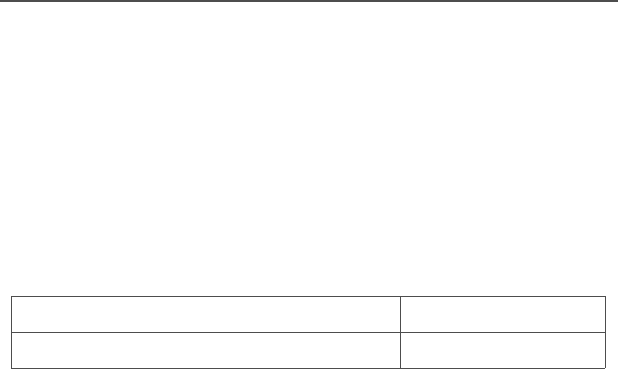
ASTRO XTS 2500 Model I 57
Commercial Warranty
Limited Warranty
MOTOROLA COMMUNICATION PRODUCTS
I. WHAT THIS WARRANTY COVERS AND FOR HOW LONG:
MOTOROLA INC. (“MOTOROLA”) warrants the MOTOROLA
manufactured Communication Products listed below (“Product”)
against defects in material and workmanship under normal use and
service for a period of time from the date of purchase as scheduled
below:
Motorola, at its option, will at no charge either repair the Product (with
new or reconditioned parts), replace it (with a new or reconditioned
Product), or refund the purchase price of the Product during the
warranty period provided it is returned in accordance with the terms of
this warranty. Replaced parts or boards are warranted for the balance
of the original applicable warranty period. All replaced parts of
Product shall become the property of MOTOROLA.
This express limited warranty is extended by MOTOROLA to the
original end user purchaser only and is not assignable or transferable
to any other party. This is the complete warranty for the Product
manufactured by MOTOROLA. MOTOROLA assumes no obligations
or liability for additions or modifications to this warranty unless made
in writing and signed by an officer of MOTOROLA. Unless made in a
separate agreement between MOTOROLA and the original end user
purchaser, MOTOROLA does not warrant the installation,
maintenance or service of the Product.
MOTOROLA cannot be responsible in any way for any ancillary
equipment not furnished by MOTOROLA which is attached to or used
in connection with the Product, or for operation of the Product with
any ancillary equipment, and all such equipment is expressly
excluded from this warranty. Because each system which may use
ASTRO XTS 2500 Portable Units One (1) Year
Product Accessories One (1) Year

58
Commercial Warranty
the Product is unique, MOTOROLA disclaims liability for range,
coverage, or operation of the system as a whole under this warranty.
II. GENERAL PROVISIONS:
This warranty sets forth the full extent of MOTOROLA'S
responsibilities regarding the Product. Repair, replacement or refund
of the purchase price, at MOTOROLA’s option, is the exclusive
remedy. THIS WARRANTY IS GIVEN IN LIEU OF ALL OTHER
EXPRESS WARRANTIES. IMPLIED WARRANTIES, INCLUDING
WITHOUT LIMITATION, IMPLIED WARRANTIES OF
MERCHANTABILITY AND FITNESS FOR A PARTICULAR
PURPOSE, ARE LIMITED TO THE DURATION OF THIS LIMITED
WARRANTY. IN NO EVENT SHALL MOTOROLA BE LIABLE FOR
DAMAGES IN EXCESS OF THE PURCHASE PRICE OF THE
PRODUCT, FOR ANY LOSS OF USE, LOSS OF TIME,
INCONVENIENCE, COMMERCIAL LOSS, LOST PROFITS OR
SAVINGS OR OTHER INCIDENTAL, SPECIAL OR
CONSEQUENTIAL DAMAGES ARISING OUT OF THE USE OR
INABILITY TO USE SUCH PRODUCT, TO THE FULL EXTENT
SUCH MAY BE DISCLAIMED BY LAW.
III. STATE LAW RIGHTS:
SOME STATES DO NOT ALLOW THE EXCLUSION OR LIMITATION
OF INCIDENTAL OR CONSEQUENTIAL DAMAGES OR
LIMITATION ON HOW LONG AN IMPLIED WARRANTY LASTS, SO
THE ABOVE LIMITATION OR EXCLUSIONS MAY NOT APPLY.
This warranty gives specific legal rights, and there may be other
rights which may vary from state to state.
IV. HOW TO GET WARRANTY SERVICE:
You must provide proof of purchase (bearing the date of purchase
and Product item serial number) in order to receive warranty service
and, also, deliver or send the Product item, transportation and
insurance prepaid, to an authorized warranty service location.
Warranty service will be provided by Motorola through one of its
authorized warranty service locations. If you first contact the company

ASTRO XTS 2500 Model I 59
Commercial Warranty
which sold you the Product, it can facilitate your obtaining warranty
service. You can also call Motorola at 1-888-567-7347 US/Canada.
V. WHAT THIS WARRANTY DOES NOT COVER:
A) Defects or damage resulting from use of the Product in other
than its normal and customary manner.
B) Defects or damage from misuse, accident, water, or neglect.
C) Defects or damage from improper testing, operation,
maintenance, installation, alteration, modification, or
adjustment.
D) Breakage or damage to antennas unless caused directly by
defects in material workmanship.
E) A Product subjected to unauthorized Product modifications,
disassemblies or repairs (including, without limitation, the
addition to the Product of non-Motorola supplied equipment)
which adversely affect performance of the Product or
interfere with Motorola's normal warranty inspection and
testing of the Product to verify any warranty claim.
F) Product which has had the serial number removed or made
illegible.
G) Rechargeable batteries if:
• any of the seals on the battery enclosure of cells are
broken or show evidence of tampering.
• the damage or defect is caused by charging or using the
battery in equipment or service other than the Product for
which it is specified.
H) Freight costs to the repair depot.
I) A Product which, due to illegal or unauthorized alteration of
the software/firmware in the Product, does not function in
accordance with MOTOROLA’s published specifications or
the FCC type acceptance labeling in effect for the Product at

60
Commercial Warranty
the time the Product was initially distributed from
MOTOROLA.
J) Scratches or other cosmetic damage to Product surfaces that
does not affect the operation of the Product.
K) Normal and customary wear and tear.
VI. PATENT AND SOFTWARE PROVISIONS:
MOTOROLA will defend, at its own expense, any suit brought against
the end user purchaser to the extent that it is based on a claim that
the Product or parts infringe a United States patent, and MOTOROLA
will pay those costs and damages finally awarded against the end
user purchaser in any such suit which are attributable to any such
claim, but such defense and payments are conditioned on the
following:
A) that MOTOROLA will be notified promptly in writing by such
purchaser of any notice of such claim;
B) that MOTOROLA will have sole control of the defense of such
suit and all negotiations for its settlement or compromise; and
C) should the Product or parts become, or in MOTOROLA’s
opinion be likely to become, the subject of a claim of
infringement of a United States patent, that such purchaser
will permit MOTOROLA, at its option and expense, either to
procure for such purchaser the right to continue using the
Product or parts or to replace or modify the same so that it
becomes non-infringing or to grant such purchaser a credit
for the Product or parts as depreciated and accept its return.
The depreciation will be an equal amount per year over the
lifetime of the Product or parts as established by
MOTOROLA.
MOTOROLA will have no liability with respect to any claim of patent
infringement which is based upon the combination of the Product or
parts furnished hereunder with software, apparatus or devices not
furnished by MOTOROLA, nor will MOTOROLA have any liability for

ASTRO XTS 2500 Model I 61
Commercial Warranty
the use of ancillary equipment or software not furnished by
MOTOROLA which is attached to or used in connection with the
Product. The foregoing states the entire liability of MOTOROLA with
respect to infringement of patents by the Product or any parts thereof.
Laws in the United States and other countries preserve for
MOTOROLA certain exclusive rights for copyrighted MOTOROLA
software such as the exclusive rights to reproduce in copies and
distribute copies of such Motorola software. MOTOROLA software
may be used in only the Product in which the software was originally
embodied and such software in such Product may not be replaced,
copied, distributed, modified in any way, or used to produce any
derivative thereof. No other use including, without limitation,
alteration, modification, reproduction, distribution, or reverse
engineering of such MOTOROLA software or exercise of rights in
such MOTOROLA software is permitted. No license is granted by
implication, estoppel or otherwise under MOTOROLA patent rights or
copyrights.
VII. GOVERNING LAW:
This Warranty is governed by the laws of the State of Illinois, USA.

62
Commercial Warranty
Notes

ASTRO XTS 2500 Model I 63
Index
A
accessories
antennas .................................43
batteries ..................................43
belt clips ..................................44
body-worn ...............................44
carry accessories ....................44
chargers ..................................44
Commport integrated microphone/
receivers ................................46
earpieces .................................46
headsets ..................................47
microphones, remote speaker .45
radio interface modules ...........48
switches ..................................48
alert tones .....................................5
analog squelch ............................21
answer a private call ...................31
antenna
attach the antenna ..................10
radio operating frequencies .....41
remove the antenna ................10
antennas .....................................43
B
batteries ......................................43
battery
attach the battery ......................9
battery charge status ...............39
charging the battery ..................8
recycling and disposal .............40
remove the battery ....................9
belt clip
attach the belt clip ...................11
remove the belt clip .................11
C
call alert
answer a call alert ...................32
carry accessories
belt clips ..................................44
body-worn ...............................44
channel
select a channel ...................... 15
chargers ..................................... 44
enhanced and multi-unit line cords
45
conventional mode operation ..... 19
E
emergency
emergency keep-alive ............. 27
send an emergency alarm ...... 24
send an emergency call .......... 25
F
failsoft ......................................... 35
G
glossary ...................................... 53
L
LED indicators .............................. 5
M
microphones, remote speaker .... 45
monitor button ............................ 18
N
notations used in this manual ....... 1
O
out-of-range ................................ 35
P
phone call
answer a phone call ................ 30
physical features of the radio ........ 3
PL defeat .................................... 21
programmable features ................ 4

64
Index
R
radio care
cleaning ...................................37
handling ...................................37
receive / transmit
use the preprogrammed monitor
button .....................................18
use the preprogrammed volume
set button ...............................17
without using the volume set and
monitor buttons ......................16
remote speaker microphone adapter
13
attach the adapter ...................13
remove the adpater .................13
repeater or direct operation .........33
repeater/direct switch ..................33
S
scan
delete a nuisance channel .......28
turn scan on and off .................28
scan (conventional only)
make a dynamic priority change ..
29
select a channel ..........................15
select a zone ...............................15
selectable power level .................21
service .........................................38
site change ..................................36
site lock .......................................36
surveillance accessories .............46
Commport integrated microphone/
receivers ................................46
earpieces .................................46
headsets and headset accessories
................................................47
radio interface modules for ear
microphones ..........................48
switches ......................................48
T
time-out timer ..............................22
Trunking System Controls ..........35
turn the radio off ......................... 14
turn the radio on ......................... 14
U
universal connector cover
attach the connector cover ...... 12
remove the connector cover .... 12
V
volume set button .......................17
W
warranty ...................................... 57
Z
zone
select a zone ...........................15

6881094C04-D
*6881094C04*
MOTOROLA, the Stylized M Logo, ASTRO and CommPort are registered
in the U.S. Patent and Trademark Office. All other product or
service names are the property of their respective owners.
© Motorola, Inc. 2004.
All rights reserved. Printed in U.S.A.
Motorola, Inc.
8000 West Sunrise Boulevard
Ft. Lauderdale, FL 33322
